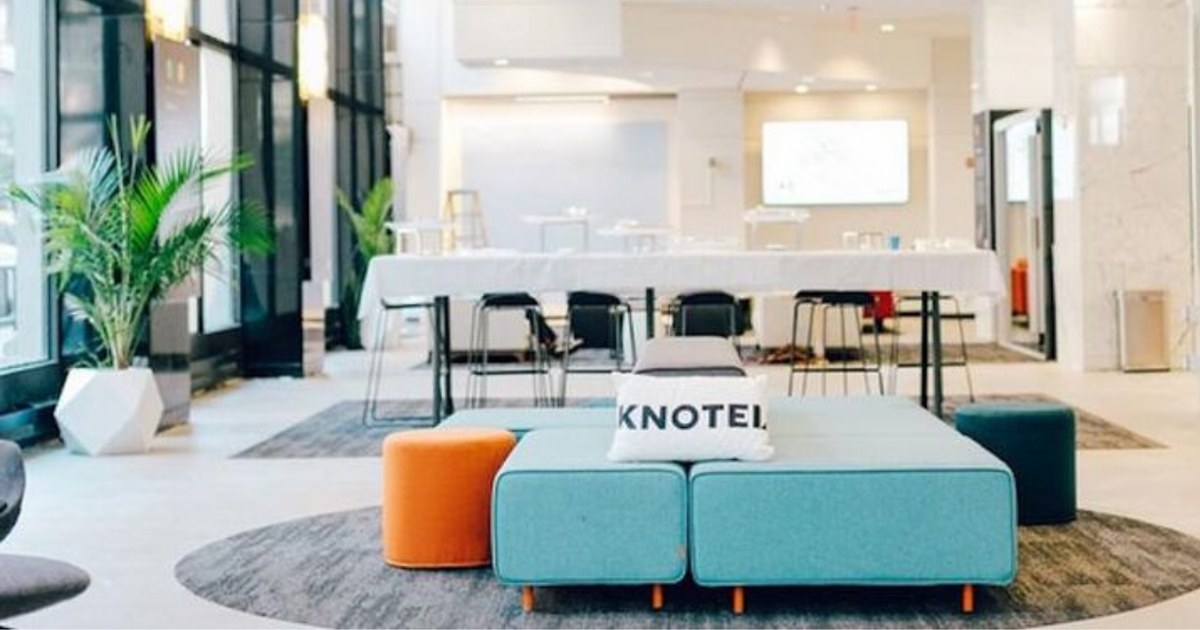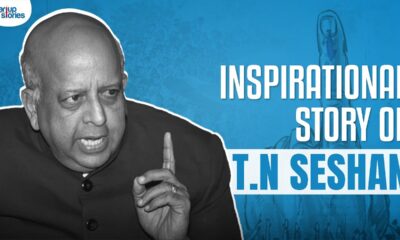Articles
5 Warning Signs For A Startup To Avoid Failure
Published
5 years agoon

A startup can go on for months without paying attention to some warning signs which indicate imminent failure. The startup journey would be smooth until suddenly problems keep popping up one after the other. Founders will scramble to plug the holes in their startup which would often lead to a diversion of their energies to the problem rather than steering the startup towards their vision. Sometimes, the problems would not even come to light until and after a startup goes bust. While the warning signs are there, they often tend to be ignored till it is too late. However, looking for these signs and making a conscious effort to address them would definitely course correct a startup for good.
Here are the five warning signs for a startup to avoid failure
1) Unable to define customer needs
A startup always needs to be aware of the needs of their customers as well as understand these needs keep changing from time to time. Clients are the key to a successful startup even more important than investors. Addressing customer complaints and listening to feedback is highly important and needs to be followed through even though some of the feedback could be highly negative.
2) Failure to pivot
A startup could be doing great things and scaling up rapidly but can still go under if it does not adapt to the changing demands and technology. A business model or a product which is working now does not mean it would work forever. This has been the hubris for many well known startups and startups which successfully pivoted have thrived. For instance Blockbuster, the video rental chain was one of the biggest companies in the United States of America before they closed shop due to the arrival of Netflix. The online streaming platform offered Blockbuster an opportunity to acquire them and adapt their model but Blockbuster declined and the rest is history.
3) Not accounting for market forces
The market is a special place which could teach a lot of things to a startup about pricing, demand and supply, sales, management and so on. While things might be sailing smoothly for the time being, startups need to have contingency plans for scenarios which might happen in the future. Forecasting needs to be done for at least a year to ensure smooth flow of operations. The recent COVID-19 pandemic is a prime example as a lot of startups were completely blindsided. While the situation could be termed as an act of god, some startups have put away some funds for use exactly for times like these. Another example would be UberEats in India, which did not account for a saturated market in food delivery which is ruled by Zomato and Swiggy. This led to them having to sell the business to Zomato.
ALSO READ: What Is Organisational Development And Why Is It Important
4) Mistimed products
While a startup can come up with a game changing idea, releasing it into the market should be a calculated affair. There is a risk of the product not being accepted widely in the market even though the technology and the idea behind it is ages ahead of its time. This has led to many products to fail miserably only to have another player taste success with the same idea. Famous examples of failures and success respectively include Orkut and Facebook, Meru and Ola, Foodpanda and Zomato, Blackberry messenger and Whatsapp.
5) Running out of cash
Working capital management is the biggest focus point for any startup as it directly impacts the survivability of a startup. Running out of capital is one of the biggest reasons startups often fail apart from poor product fit and failed pivots. Take the case of Hola Chef for example, a startup which connects users with chefs who cook exotic meals. Venture capitalists loved the idea of this startup but the arrival of Zomato and Swiggy saw investors backing out of Hola Chef which ultimately led the startup to shut down and eventually be acquired by Ola backed Foodpanda.
If you can locate any of these warning signs, you could better adjust the course of your startup to navigate choppy markets and to mitigate those risks on the road to survival and growth.


The workplace has undergone massive changes in the last century. At the turn of the Industrial Revolution, any workplace was dominated by men while the women were delegated to run the homes. However, with the advent of the internet and new and exciting technologies, workplaces have undergone a tectonic shift. Women are no longer comfortable staying at home and are instead opting to lead teams and organisations. As every year passes, we get closer to true gender equality, women have proven time and again that they are equally capable to get the job done if not better in some instances. Names like Wolfe Herd (Bumble founder,) Kylie Jenner (Kylie Cosmetics founder,) Masaba Gupta (Masaba clothing label founder) are just some of the names who are known for leading world famous brands with their unique style of leadership.
As the world celebrates International Women’s Day, we bring to you five women founders who run world famous and successful startups.
1) Upasana Taku-MobiKwik
If you are an Indian and are used to doing online shopping, more often than not at the time of payment, you would be directed to a payment gateway. One of these gateways would normally be MobiKwik. The startup is a well known name in the digital payments and digital wallet space. MobiKwik was founded by Upasana Taku in 2009, who prior to founding MobiKwik used to work with PayPal. Today Upasana Taku is also in charge of bank partnerships, business operations, and talent acquisition at MobiKwik.
2) Richa Kar-Zivame
An enthusiastic MBA student, Richa Kar, developed an online lingerie shopping platform in the year 2011. Currently, Zivame is India’s leading online lingerie store with a valuation of more than $ 100 million. The brilliant idea for her own lingerie business came to light when Richa tracked Victoria’s Secret’s sales, who was one of her clients when she was working at SAP. She observed the lingerie sales figures reached peaks overseas but, Indian women were not provided with the similar innerwear. While Richa was studying the Indian lingerie market, she realized the social embarrassment in India surrounding lingerie shopping. Today Richa Kar could be credited with destigmatising the uneasiness surrounding lingerie shopping in India.
3) Falguna Nayar-Nykaa
After a long stint as an investment banker, Falguni Nayar founded Nykaa.com in the year 2013. An online one stop shop for beauty products from Indian and international brands, Nykaa changed the world of online shopping. Who would have ever thought buying makeup online would be so easy? Falguni Nayar proved many critics wrong and created a brand new place for people who love experimenting with styles, designs and colors.
ALSO READ: Zivame: Founding Story
4) Sabina Chopra-Yatra.com
Yatra.com is a popular Indian website for making flight and hotel bookings. Sabina Chopra was instrumental in identifying the potential for travel commerce in India and people moving towards cheaper or easier travel. By the time, people started looking to make bookings, Sabina made sure Yatra.com was already in place. Sabina was the former Head of India Operations of eBookers, which is also an online travel company based in Europe. Along with this, she was also working with Japan Airlines which further adds to her experience in the travel industry.
5) Rashmi Sinha-SlideShare
SlideShare allows people to upload and access their presentations online. While this feature is presently available everywhere, SlideShare was one of the first players in making this happen. Rashmi Sinha was one of the founders of the presentation sharing platform SlideShare. The company became so successful that in 2012, LinkedIn acquired the company for an amount of $100 million.
Let us know in the comments if you know any other wonderful women who have become leaders of their right or have started up and are doing extraordinary things. We at Startup Stories wish a wonderful Women’s Day to all the women in the world who are changemakers.
Articles
Why Are Ads On Digital Media Failing To Reach The Right Audience?
Published
5 years agoon
March 1, 2021
If you are a regular user of social media platforms and also a fan of consuming content on the digital medium, then there is a very high likelihood that you have seen ads on pages you are reading or watching something. There would be times when you have been targeted by an ad which feels like it was wrongly targeted at you. Imagine if you are a vegetarian by choice and while browsing online, if you are targeted by a food delivery app which shows ads about chicken dishes. The ad would only serve to spoil the mood of the online user instead of serving its actual purpose which is to push the user to buy a chicken dish.
These wrongly targeted ads might be the side effects of performance marketing or a weak brand marketing. Performance marketing means advertising programs where advertisers pay only when a specific action occurs. These actions can include a generated lead, a sale, a click, and more. Inshort, performance marketing is used to create highly targeted ads for a very specific target audience at a low cost. Performance marketing usually means high volume for a very specific cost.
Brand marketers on the other hand believe in narrowly defining target audiences but end up spending a lot of money on ad placements. Gautam Mehra, CEO, Dentsu Programmatic India & CDO, Dentsu International Asia Pacific said, “You’ve defined a persona, you know the emotions you want to elicit, but then you buy a YouTube masthead and CricInfo sponsorships because IPL is up. If brand advertisers look at audience-based buys more deeply than just placements, you will see more relevant ads (sic.)”
ALSO READ: How Digital Marketing Is Impacted Due To The COVID-19 Pandemic
Performance marketing is more of a sales function rather than a marketing function and is about meeting the cost of acquisition. This is a reason why budgets are usually high for performance marketing. Mehra goes on to add, “the fact is that an engineer can out-beat FMCGs on performance marketing. Advertisers who have cracked this are spending 10x and are on an ‘always on’ mode (unlike time-bound brand campaigns.)”
There is always the case of supply and demand, with the supply usually exceeding the demand on digital platforms. Ultimately, it boils down to the choice between no ad versus low relevance ad and it is quite easy to guess that having a low relevance ad is better.
Arvind R. P., Director – Marketing and Communications at McDonald’s India (West and South,) said “McDonalds’ for instance, has seen its share of spends on digital grow from 20% levels a couple of years back to over 40% at present. Outcomes of this journey have been encouraging, proven by our media-mix-modelling and other key metrics. We have seen best results from an optimal mix of Television plus digital (sic.)” Moreover, Arvind also believes performance marketing only approach could turn out to be more suited to short term, versus a more consistent full funnel effort. The latter ensures adequate emphasis on building consideration, as well as growing transactions. Arvind feels digital is a complex medium which needs investment in the right talent who could use the right tools. Brands which underestimate the need for the investment are often disappointed from the return on investment from the digital medium.
With the constantly changing consumer dynamics marketers are now shifting to unscripted marketing which frankly needs more insights into the consumer mindset. The lack of marketers to do the proper research is why digital medium is plagued with irrelevant ads.
Articles
From Unicorn To Bankruptcy; Knotel Bears The Brunt Of COVID-19 Pandemic
Published
5 years agoon
February 8, 2021
It is no secret that in the fast paced world of startups, fortunes can change at the snap of fingers. Sometimes startups tend to scale so quickly that they become unicorns and sometimes the fortunes reverse so quickly that a startup can immediately go bankrupt from being a unicorn. The latter was the case for an American property technology startup Knotel, who are now bankrupt due to the disruptions by the COVID-19 pandemic.
Knotel is a property technology company quite similar to WeWork. Knotel designed, built and ran custom headquarters for companies which It manages the spaces with ‘flexible’ terms. Knotel does a mix of direct leases and revenue sharing deals. Knotel marketed its offering as ‘headquarters as a service’ or a flexible office space which could be customized for each tenant while also growing or shrinking as needed. For the revenue-share agreements, Knotel solicits clients, builds out offices, and manages properties, and shares the rent paid to it by the client with the landlord. This model is the majority revenue generator for Knotel.
In March 2020, just before the COVID-19 pandemic unleashed its economic destruction on the world, Knotel was valued at $ 1.6 billion. What is even more interesting is Knotel raised $ 400 million in Series C funding in August 2019 which led to its unicorn status. However, with the COVId-19 pandemic and its consequent lockdowns and curfews by various governments across the world, startups and businesses shifted to a remote working model. This in turn led to startups pulling out of Knotel properties to cut down on working costs.
ALSO READ: Quibi : Startup With A Billion Dollar Launch To Shutting Down All In Six Months
In late March 2020, according to Forbes, Knotel laid off 30% of its workforce and furloughed another 20%, due to the impact of the coronavirus. It was at this point that Knotel was valued at $ 1.6 billion. The company had started the year with about 500 employees. By the third week of March,Knotel had a headcount of 400. With the cuts, about 200 employees remained with the other 200 having either lost their jobs or on unpaid leave, according to Forbes.
In 2021, Knotel filed for bankruptcy and agreed to sell its assets to Newmark, one of their investors for a total of $ 70 million dollars. As work culture is still undergoing changes as a consequence of the COVID-19 pandemic and with many companies realising that remote work model saves costs and improves work efficiency, the flexible workspace sector would continue to face challenges. Knotel is just the tip of the iceberg and is a warning call for the flexible working spaces industry.
Recent Posts
- How Pronto Is Redefining 10-Minute Home Services in India with a $25 Million Fundraise
- Bhavish Aggarwal Sells ₹325 Crore Ola Electric Stake, Retains Control
- T.N. Seshan: The Fearless Reformer Who Redefined Indian Democracy
- Kuku FM’s $200 Million IPO: Mebigo Labs Hires Top Bankers to Lead Public Listing
- Google Launches Startup Hub in Hyderabad to Boost India’s Innovation Ecosystem
- Indian Man Quits JPMorgan, Takes 70% Pay Cut to Launch $6 Million Startup
- Zerodha Reports 23% Profit Decline in FY25 as Revenues Miss Target
- Zoho Pay Debuts as India’s New UPI Challenger, Taking on PhonePe, Paytm, and Google Pay
- Meta Expands AI-Powered Reels Translation to Hindi and Portuguese, Enhancing Global Creator Reach
- Dunzo’s Collapse: Reliance’s ₹1,645 Crore Loss Signals Challenges in India’s Hyperlocal Delivery Market
- Zoho Arattai vs WhatsApp: 5 Reasons India’s Homegrown Messenger Is Winning in 2025
- BMW’s New Logo Debuts Subtly on the All-Electric iX3: A Modern Evolution
- iPhone 17 India Price, Features & Availability: All You Need to Know
- Apple’s iOS 18.7 vs iOS 26: Which Update Should You Choose for Your iPhone in 2025?
- Deep-Tech Startup EndureAir Raises INR 25 Crore from IAN Alpha Fund to Boost Drone Innovation
- Venture Catalysts Raises Rs 150 Crore to Boost Multi-Stage VC Platform and AI Capabilities
- U.S. AI Startup Anthropic Expands Global Ban to Tackle Chinese Tech Influence
- Apple Achieves 13% Growth in India with $9 Billion Sales and New Flagship Stores in FY25
- OYO Achieves Record Profitability in FY25 with Deferred Tax Boost and New Corporate Identity
- MPL to Lay Off 60% of India Workforce Following Online Gaming Ban

How Pronto Is Redefining 10-Minute Home Services in India with a $25 Million Fundraise

Bhavish Aggarwal Sells ₹325 Crore Ola Electric Stake, Retains Control












binance
May 23, 2025 at 3:52 pm
Thank you for your sharing. I am worried that I lack creative ideas. It is your article that makes me full of hope. Thank you. But, I have a question, can you help me?
sign up binance
May 28, 2025 at 12:31 am
Thanks for sharing. I read many of your blog posts, cool, your blog is very good.
4m7zv
June 5, 2025 at 5:35 pm
name brand for clomid clomid calculator cheap clomid without insurance where can i get cheap clomiphene without prescription how to get cheap clomiphene no prescription how can i get clomid without dr prescription get cheap clomiphene online
binance Norāde
June 18, 2025 at 4:49 pm
Your point of view caught my eye and was very interesting. Thanks. I have a question for you.
binance
September 13, 2025 at 9:58 pm
Your article helped me a lot, is there any more related content? Thanks!
GO88
November 6, 2025 at 12:26 pm
Tham gia cộng đồng game thủ tại Go88 để trải nghiệm các trò chơi bài, poker phổ biến nhất hiện nay.
Kuwin
November 7, 2025 at 5:53 am
kuwin sở hữu kho game đa dạng từ slot đến trò chơi bài đổi thưởng, mang đến cho bạn những giây phút giải trí tuyệt vời.
谷歌站群
November 7, 2025 at 7:11 pm
专业构建与管理谷歌站群网络,助力品牌实现全域流量的强势增长。谷歌站群
站群程序
November 10, 2025 at 5:34 pm
搭载智能站群程序,自动化搭建与管理,为SEO项目提供核心驱动力。站群程序
MM88
November 12, 2025 at 7:10 am
Khám phá thế giới giải trí trực tuyến đỉnh cao tại MM88, nơi mang đến những trải nghiệm cá cược thể thao và casino sống động.
ios超级签
November 13, 2025 at 6:05 pm
苹果签名,苹果超级签平台,ios超级签平台ios超级签苹果企业签,苹果超级签,稳定超级签名
iwin
November 16, 2025 at 5:57 pm
iwin – nền tảng game bài đổi thưởng uy tín, nơi bạn có thể thử vận may và tận hưởng nhiều tựa game hấp
J88
November 20, 2025 at 6:56 pm
Đến với J88, bạn sẽ được trải nghiệm dịch vụ cá cược chuyên nghiệp cùng hàng ngàn sự kiện khuyến mãi độc quyền.
MM88
November 22, 2025 at 12:13 pm
Với giao diện mượt mà và ưu đãi hấp dẫn, MM88 là lựa chọn lý tưởng cho các tín đồ giải trí trực tuyến.
Betano Freispiele Deutschland
December 21, 2025 at 10:06 pm
Dazu kommen Tischspiele und Skill Games, die ebenfalls ohne
Risiko verfügbar sind. Hunderte Games warten darauf, von dir entdeckt zu werden, und viele
von ihnen ermöglichen Freispiele oder andere spannende Features.
Lohnt sich Gametwist für Anfänger? Ja, Gametwist bietet
ein mehrstufiges Levelsystem von Bronze bis
Diamant.
Ein großer Unterschied von GameTwist zu anderen Online Casinos liegt auch im Angebot an Kartenspielen. Um bei
GameTwist zu spielen benötigt ihr Twists, die ihr käuflich erwerben müsst.
Wenn ihr also bereit seid, bei GameTwist mit virtuellem
Geld zu spielen, könnt ihr euch bei der Registrierung einen Casino Bonus sichern.
Mindestens 3 Stern-Scatter starten das Freispiel-Feature mit
bis zu 20 Freispielen, in denen das Schatztruhen-Wild
Symbole ersetzt und die Werte aller Münzbeutel auf
den Walzen auszahlt – da kann es schon mal ordentlich im Geldbeutel klimpern. Im
GameTwist online slots hast du die bunte Welt der Online Casino Spiele immer griffbereit auf deinem
Smartphone. Und weil es nicht um echtes Geld, sondern um Twists geht, kann man in vielen Fällen gratis nach Lust und Laune Mut zum Einsatz beweisen und dementsprechend
locker spielen! Auch Früchte-Slots mit tollen Gewinnchancen und Features kann man bei uns spielen! Vor den Freispielen wird durch Zufall ein Symbol – zum Beispiel Gretchen – ausgesucht.
Ab 3 Scatter-Symbolen (Mephisto), die auf beliebigen Position der
Walzen fallen können, werden 10 Freispiele (Bonusrunden, die gratis
sind!) mit expandierendem Spezialsymbol aktiviert, die man völlig
gratis spielen kann.
References:
https://online-spielhallen.de/iwild-casino-freispiele-dein-weg-zu-kostenlosen-spins-und-gewinnen/